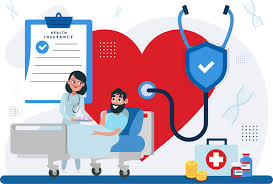Cerebral stroke is the most frequent cause of disability in adults and one of the most frequent causes of death. Two-thirds of cases occur over the age of 65, but young people can also be affected. The symptoms are due to the transient or permanent loss of certain brain functions and depend on the location of structural damage within the central nervous system, caused by a reduction in blood flow or by the rupture of a blood vessel.
In most hospitals the management of the acute phase is performed by a neurologist. The neurosurgeon is needed in the cases of hemorrhagic stroke that require surgical treatment.
The best neurosurgeon in Bangalore is Dr. Sreekanta Swamy. He has over 35 years of experience and is a senior consultant at Apollo Hospital Bangalore.
Brain hemorrhage surgery cost in India varies between USD 5500 and 6000. This includes approximately 7 days of hospital stay and 5 days outside the hospital.
Location and Symptoms
Since the acute event generally occurs only on the right side or on the left side of the brain, the symptoms are often unilateral and include loss of sensation on one side of the body or face, paralysis of one side of the body or face, loss of sight in the left or right field of vision, split vision, difficulty with speech or articulation of words, dizziness, vomiting and loss of consciousness.
Various combinations of these symptoms may occur or perhaps only one. If ischemia occurs in a less sensitive brain area, it may not cause symptoms and go unnoticed. In many cases the stroke causes permanent damage to the nerve tissue with the consequent permanence of symptoms, that can still improve during rehabilitation therapy as other brain regions can be activated to replace the lost functionality partially.
In other cases, or if early pharmacological interventions are possible, the blood flow is restored within a short time, allowing the survival of the sensitive and non-regenerable nervous tissue. An important feature of all acute stroke symptoms is their sudden manifestation.
The cerebral stroke is almost always the consequence of chronic pathology of the cardio-circulatory system such as arterial hypertension, arteriosclerosis, or cardiac pathology. While hypertension itself can cause cerebral hemorrhage, in most cases, it promotes arteriosclerosis, which in turn causes a slow obstruction of the blood vessels that feed the brain.
Surgical Treatment
When diagnostic tests reveal the presence of arteriosclerotic narrowing (stenosis) of the neck vessels, vascular surgery is possible (endarterectomy or thromboendarterectomy) to restore normal blood flow and remove arteriosclerotic plaques. Since the surgery itself can have complications or can, in turn, cause a stroke, it is necessary to assess whether the possible benefit is greater than the risks involved. To better define the risks and benefits, a series of studies have shown that carotid artery surgical therapy is indicated when stenosis close more than 70% of the vessel and when the patient has had recent symptoms of stroke or TIA.
Another therapeutic possibility of ischemic stroke that is finding an increasing application in highly specialized hospital centers is mechanical thrombectomy. This is an endovascular treatment that involves aspiration or removal of the thrombus through a probe inserted into the femoral artery and guided to the cerebral artery where the blockage is located.
This method of treatment can be performed provided that the thrombosis happens in one of the major cerebral arteries but is also applied in cases where the pharmacological treatment is contraindicated.
It is of fundamental importance to specify, however, that whatever the cause, at the first signs of a stroke, the patient goes to the hospital as soon as possible to undergo tests and specialist care, avoiding loss of time that could worsen the situation or nullify the possibility of being treated effectively.
Long term management
An antiplatelet agent such as acetylsalicylic acid or Clopidogrel may be administered lifelong. These drugs, in addition to being effective in the acute phase of stroke, are commonly used for the prevention of recurrences.


















Be First to Comment